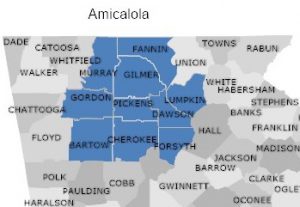
None of the information on this page has been provided or approved by Amicalola EMC.

While we have made attempts to ensure that the information displayed are correct, Zippia is not responsible for any errors or omissions or for the results obtained from the use of this information.

Sources of data may include, but are not limited to, the BLS, company filings, estimates based on those filings, H1B filings, and other public and private datasets. The data on this page is also based on data sources collected from public and open data sources on the Internet and other locations, as well as proprietary data we licensed from other companies. The employee data is based on information from people who have self-reported their past or current employments at Amicalola EMC. Today, Amicalola EMC provides electricity through 5,678 miles of line to approximately 42,078 members which have approximately 49,947 meters.Zippia gives an in-depth look into the details of Amicalola EMC, including salaries, political affiliations, employee data, and more, in order to inform job seekers about Amicalola EMC. These cooperatives now serve close to 4.4 million consumers in 73 percent of the state’s land area. Over time, forty-one electric distribution cooperatives were created in Georgia, the first in 1936 and the last in 1948. In addition to the headquarters office, Amicalola EMC also has two district offices located in Ellijay and Dahlonega. This location would be the permanent location for Amicalola EMC until November, 1984 when a new headquarters facility would be constructed on Highway 515 South of Jasper. Land for the building was bought in Jasper in 1949 with the complex being built and opened in March of 1953. Plans for a headquarters office were made as soon as the Co-op was formed. Two years later power was available to everyone in the region. Attendees for the first meeting of members included Georgia Governor Eugene Talmadge, Senator Richard Russell, Congressman Frank Welchel and State Attorney General (and later governor) Ellis Arnold.Ī 1948 survey revealed that only 800 homes in the Amicalola EMC service area needed electric service. Approximately three thousand people attended, consuming 2,400 pounds of barbecue and six barrels of lemonade. The Rural Electrification Administration (REA) sent notification of the first allocation of funds ($332,000) on Augthe first electrification for Pickens, Gilmer and Cherokee Counties, twenty-five miles of power lines and ninety members came in late April 1941.Īmicalola EMC’s first annual meeting was held on Jin Jasper. He would later become the first president of our national organization, the National Rural Electric Cooperative Association (NRECA).

Steve Tate was elected as the first President of the Amicalola EMC Board of Directors. Moore, Pickens County Agent, to adopt bylaws, to act upon application for membership and to elect officers. Nine directors met on Februin the office of A.C. Roosevelt signed the Rural Electrification Administration Act to bring electricity to rural America. Four years later, on December 12, 1939, nine rural electric pioneers met next door to the Pickens County Courthouse to form a new electric membership corporation (EMC) to serve areas in Gilmer, Pickens, Cherokee, Dawson and Lumpkin Counties. Because of this action and the dedication of these local leaders, Amicalola Electric Membership Corporation was born on February 10, 1940. My Co-op A Brief History of Amicalola EMC


 0 kommentar(er)
0 kommentar(er)
